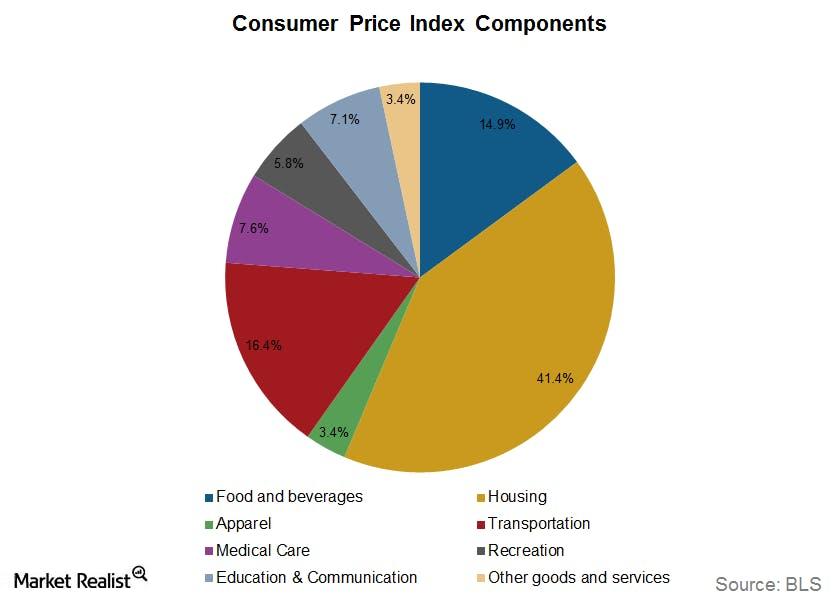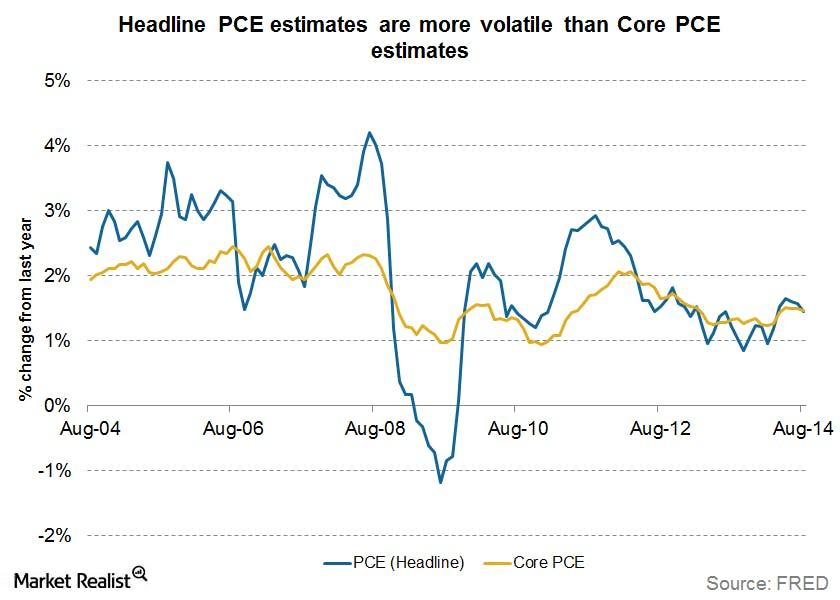iShares US Real Estate
Latest iShares US Real Estate News and Updates
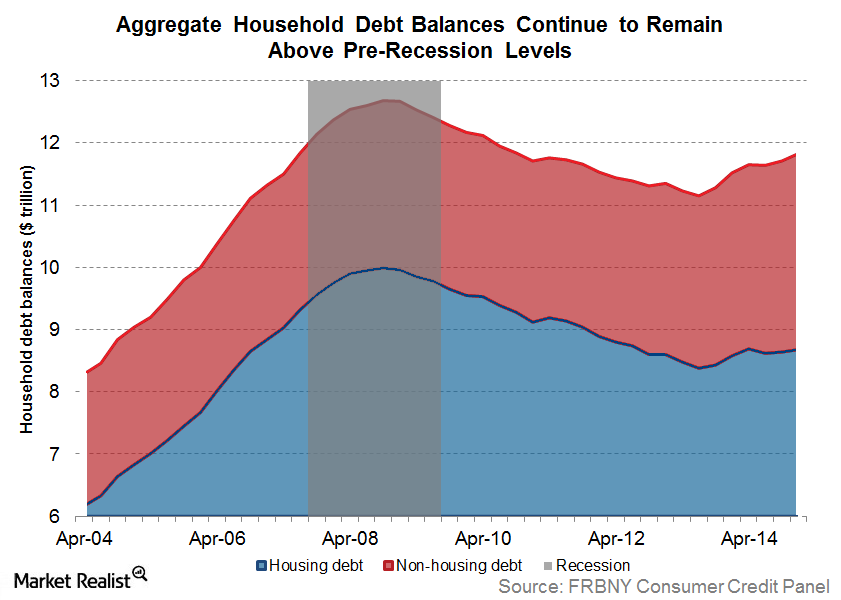
The Great American Deleveraging: Fact or Myth?
The great American deleveraging has largely been limited to the financial sector (XLF) (IYF). Non-financial debt is still much higher than historical averages.
REITs 101: Understanding this Investment Vehicle
In this series, we’ll get down to the brass tacks of investing in the REIT sector, the market’s current landscape, and the benefits you can expect from this type of investment.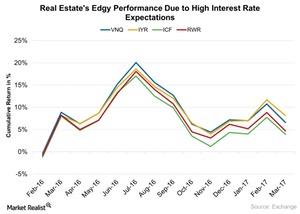
The Real Estate Reaction: Gauging the Impact of the Fed’s Rate Hikes
The rising interest rate is expected to boost the economy in the long run, but it could severely impact sectors like real estate.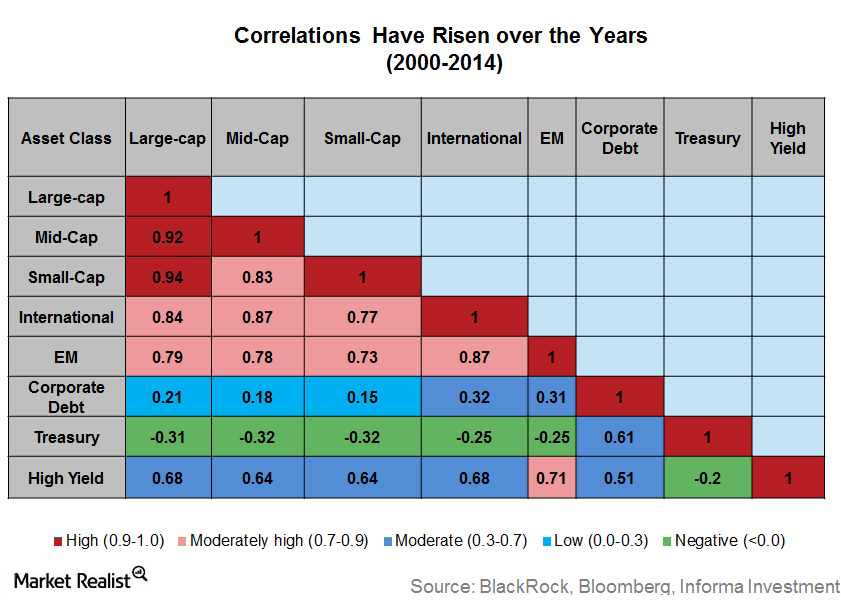
Diversify Broadly and Consider Alternative Investments
Rising correlation across asset classes is a sticky problem that investors face while investing in today’s markets.
Will Crude Oil Futures and S&P 500 Move in the Same Direction?
February US crude oil (UWT) (USL) futures contracts rose 0.5% to $61.73 per barrel on January 8. Prices are near the highest level since December 2014.Financials Financial intermediation, systemic risks, and “too big to fail”
When financial intermediaries allocate funds, they assess the risks and returns that come from various risky claims. Intermediaries help allocate resources and risks throughout the economy. Financial intermediation can result in concentrated risks. The risks increase the financial system’s fragile state. These risks are called systemic risks.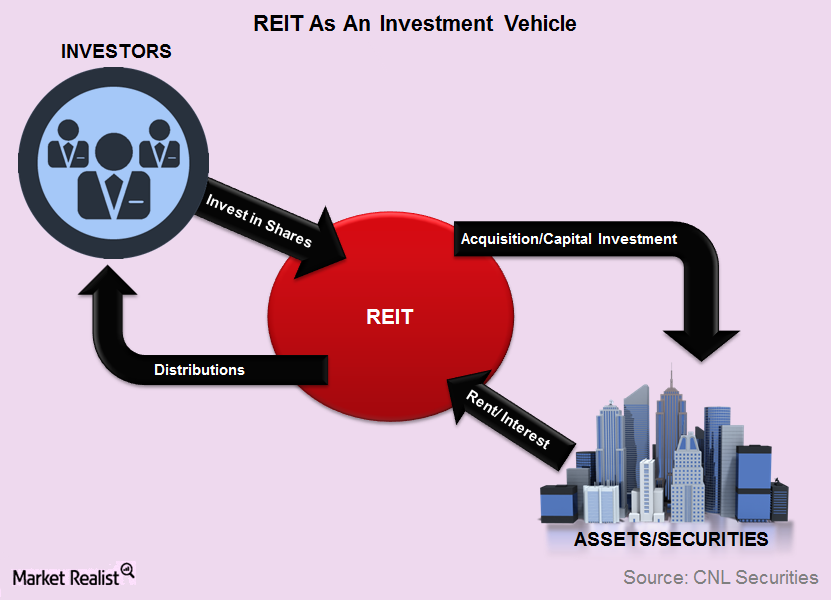
REITs 101: Understanding this Vehicle
By Michael Orzano, Director, Global Equity Indices Publicly traded property stocks, including real estate investment trusts (or REITs) and real estate operating companies (or REOCs), allow investors to gain exposure to real estate, which is generally an illiquid asset class, without sacrificing the liquidity benefits of listed equities. They also typically offer higher yields than […]
These Were Bill Ackman’s Largest Sector Holdings in 3Q17
Pershing Square Capital Management’s top sectors in 3Q17 were consumer discretionary (XLY), information technology (XLK), consumer staples (XLP), real estate (IYR), and materials (XLB).Financials Key differences between PCE and CPI as inflation measures
The CPI and PCE are both important indicators of U.S. inflation. CPI is more important from an individual perspective, while PCE is more important for monetary policy.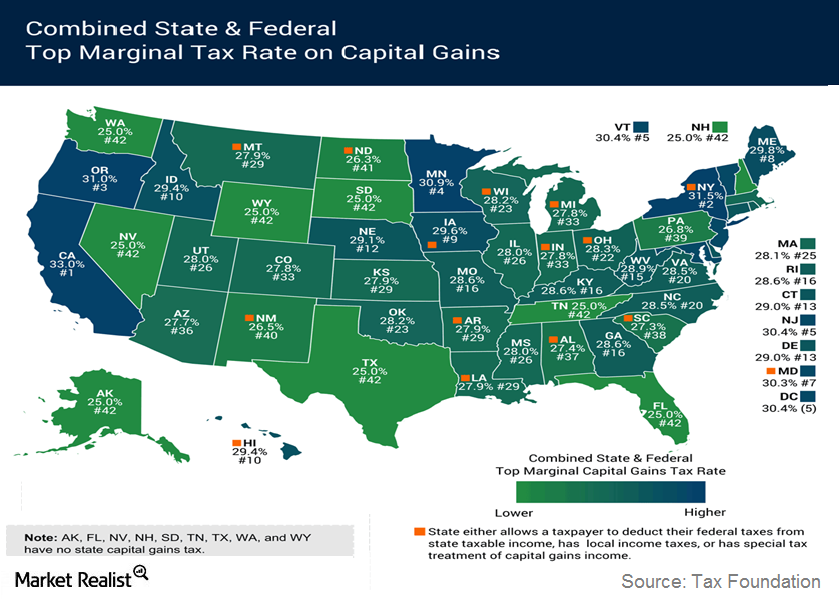
Basics About The Capital Gains Tax
The rates for capital gains tax depend on the asset’s holding period. If the holding period is less than one year, short-term capital gains tax is payable.Must-know fundamentals about the US Consumer Price Index
The Bureau of Labor Statistics (or BLS) developed the U.S. CPI in 1913 to measure the change in prices.Why personal consumption expenditure is important to investors
The U.S. Bureau of Economic Analysis issues PCE data, and the price index is a measure of the average increase in prices for all domestic personal consumption.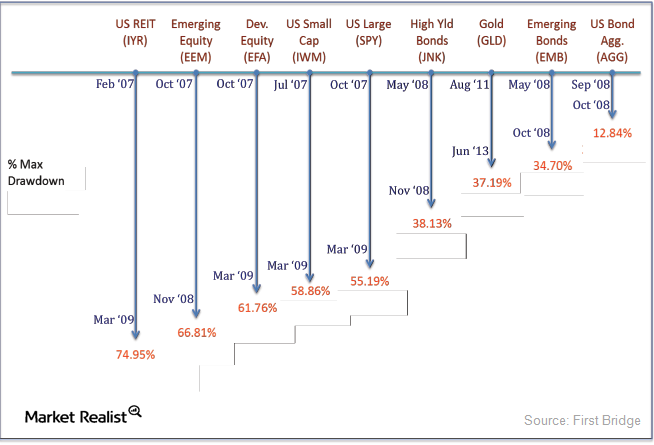
Must-know: Minimizing ETF losses by observing max drawdowns
In practice, asset owners (both retail and institutional) want to avoid significant portfolio drawdowns even if the benchmark index declines.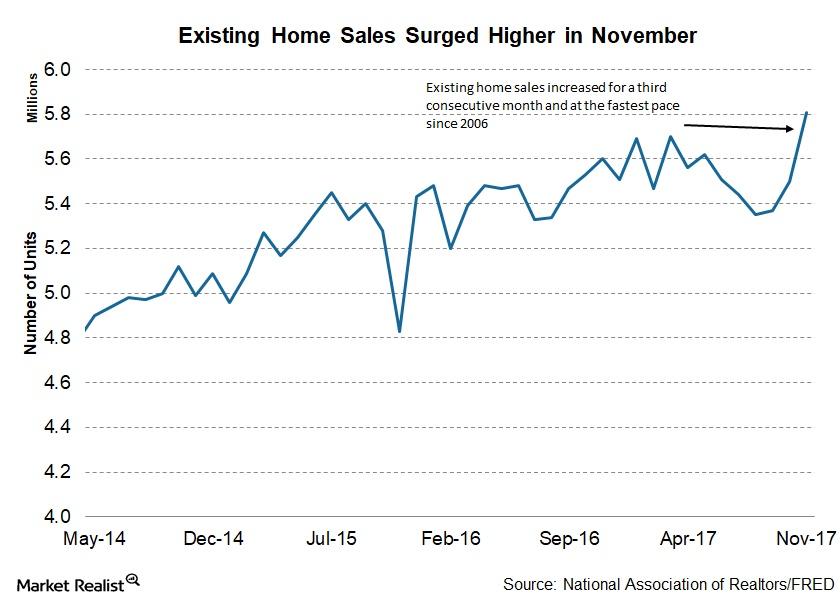
Existing Home Sales: Strongest Pace in 11 Years
According to the latest report from NAR, existing home sales rose 5.6% to a seasonally adjusted annual rate of 5.81 million homes in November.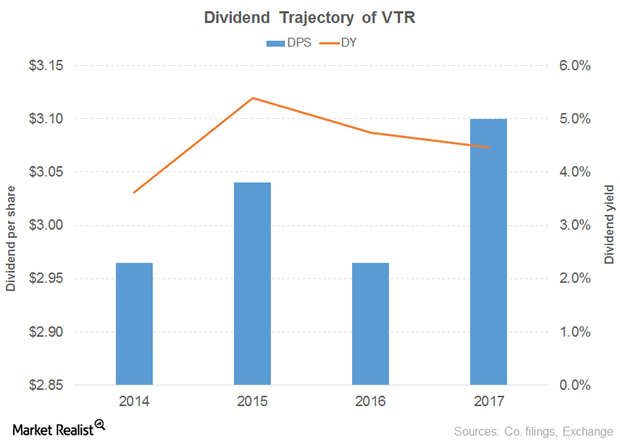
How Ventas’s Dividend Yield Compares
Revenue and earnings Ventas (VTR) is a major REIT in the United States and Canada. The company’s revenue growth slowed from 18% in 2015 to just 5% in 2016. The growth was driven by all of its segments, through resident fees and services, office building and other service revenue, and income from loans and investments, […]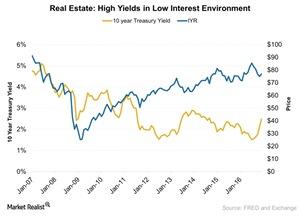
How Would an Interest Rate Hike Affect Real Estate Valuations?
The real estate sector’s (VNQ) (IYR) performance was subdued in 2016 due to its supply-demand dynamics.
Why Look to REITs for Opportunities?
HEDGING AGAINST INFLATION Property stocks and REITs have often been viewed as inflation hedges because expected inflation will affect prices of real estate, and rental income tends to rise along with generalized inflation. However, other factors may mitigate the impact of inflationary forces. Some of these additional factors may include real estate supply and demand […]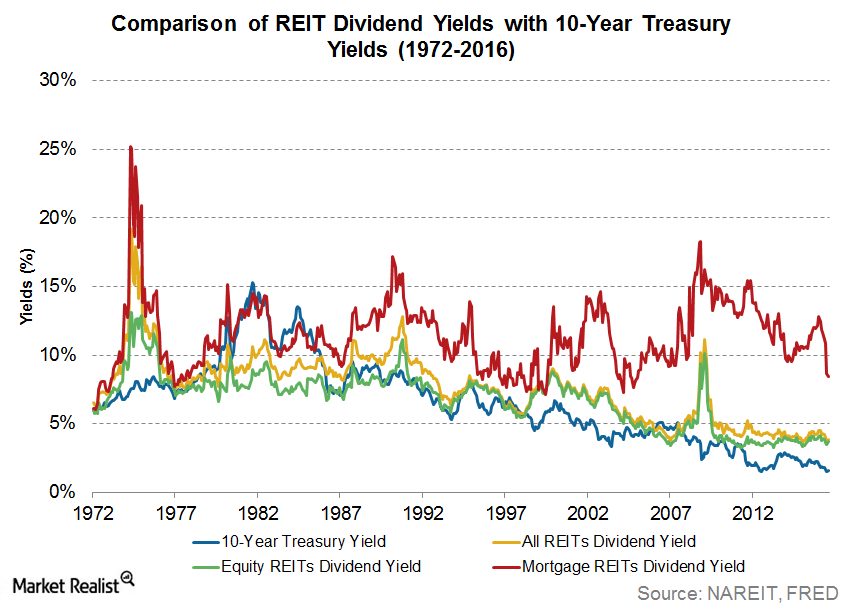
Why REITs Tend to Offer High Dividend Yield
COMPARING DIVIDEND YIELDS ACROSS ASSET CLASSES Since 1999, approximately half of the total return of the Dow Jones U.S. Select REIT Index has come from dividends. During periods of heightened volatility, this income could act as a buffer and may mitigate negative price movements. Historically, the Dow Jones U.S. Select REIT Index has produced higher […]
The REIT Advantage: High Return, Low Correlation
RETURNS AND RISKS OF REITS REIT and property stock performance has been relatively strong over the long term, especially when compared with traditional bond and equity indices. Since 1992, the Dow Jones Global Ex-U.S. Select RESI has had an average total return close to 9%, while the Dow Jones U.S. Select REIT Index has had […]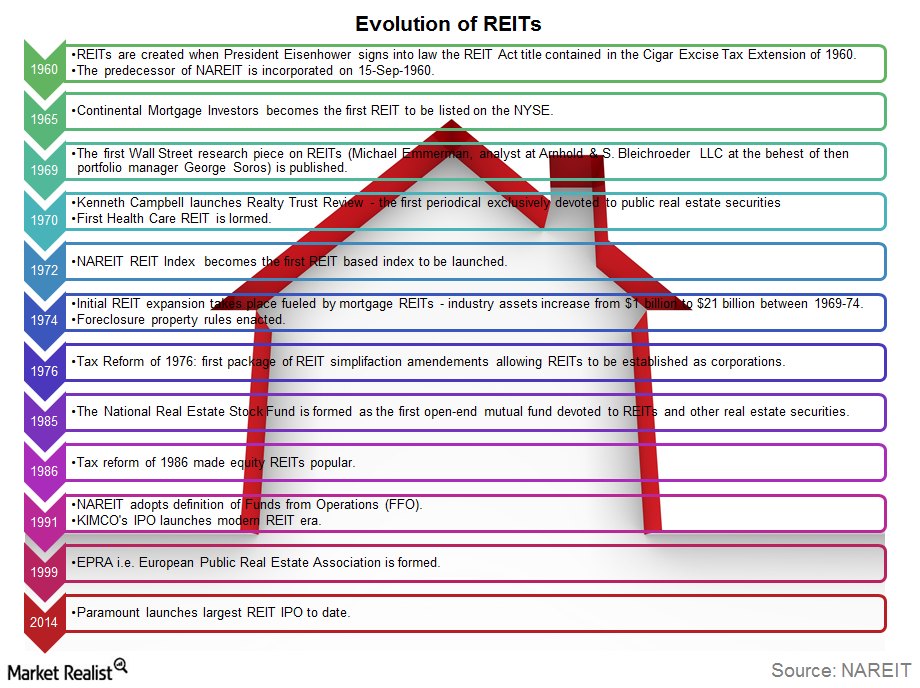
The Evolution of the REIT
The Evolution of REITs The basic concept of REITs originated with the business trusts that were formed in Massachusetts in the mid-19th century, when the wealth created by the industrial revolution led to a demand for real estate investment. The first REIT was set up in 1961, but it took several decades before REITs were […]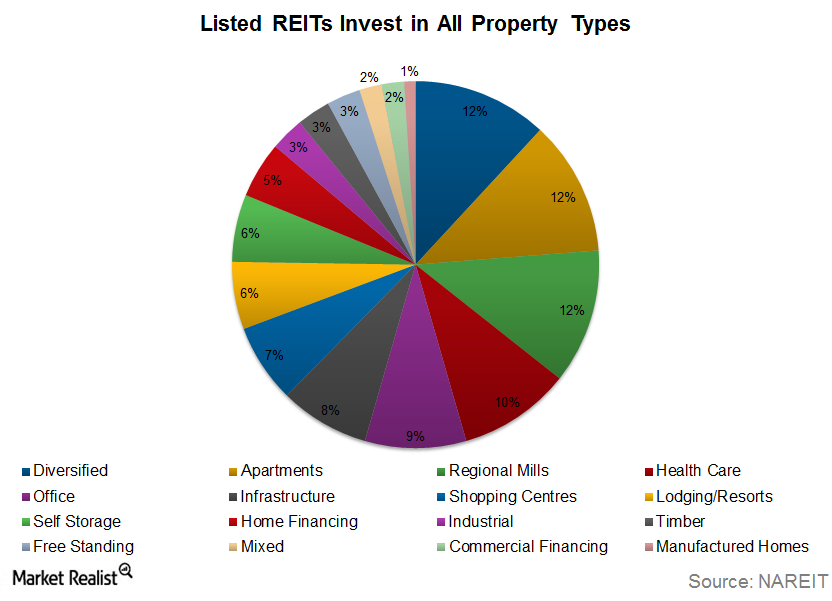
REITs Explained: Qualifications and Types of REITs
To qualify as a REIT, a company must have most of its assets and income tied to real estate investment and must pay out almost all of its taxable income to shareholders in the form of dividends. In the U.S., a REIT must meet the following four requirements. The REIT must distribute at least 90% […]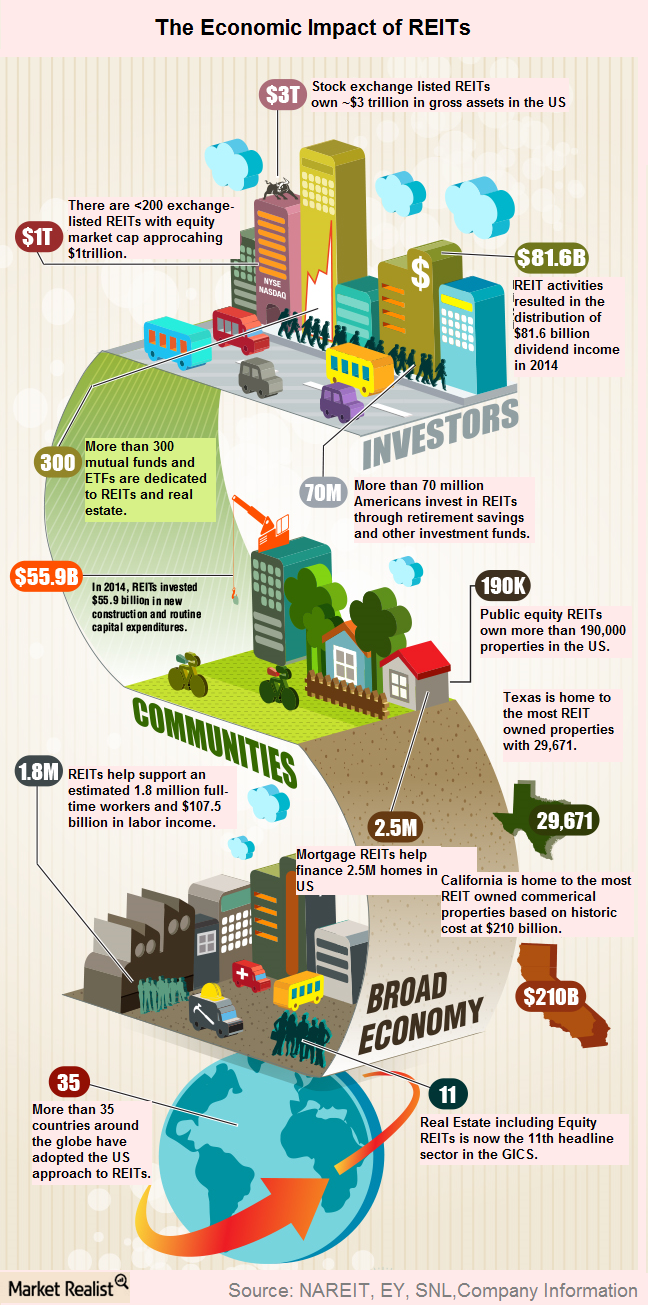
Why Look to the REIT Sector for Opportunities?
Not only do REITs (RWR)(ICF) help diversify a portfolio, but they also bolster portfolio income with their steady dividends and their long-term capital appreciation.
Why REITs Tend to Offer High Dividend Yields
REITs (IYR)(VNQ) are known for their high dividend yields, outclassing almost all other broad market indices.
The REIT Advantage: High Returns, Low Correlation
Not only do REITs tend to provide steady and stable returns over the long term, but they also help in diversifying investor portfolios effectively.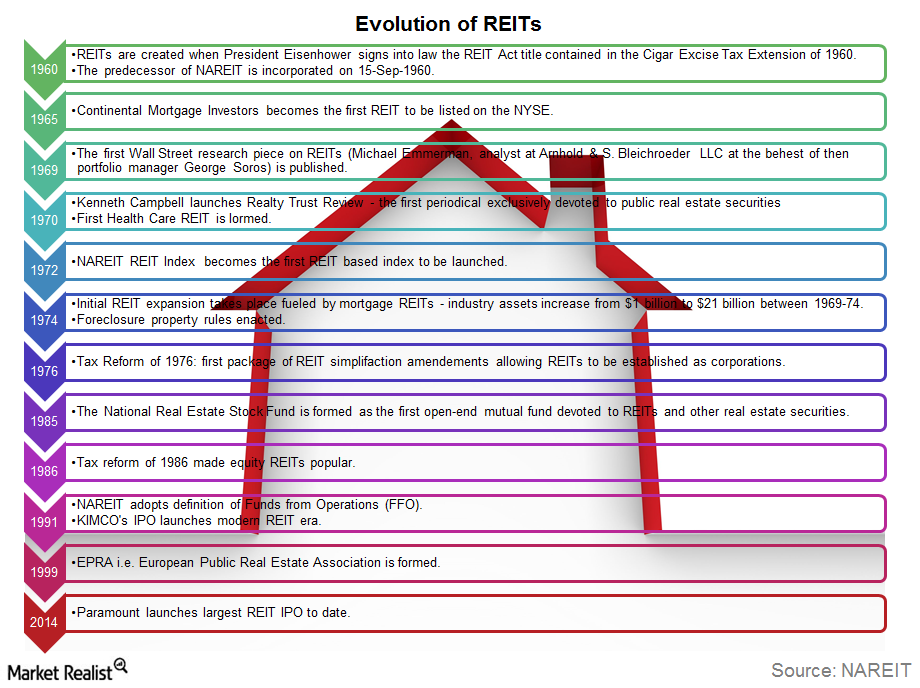
The Evolution of REITs
The REITs (IYR) sector has shown phenomenal growth over the years. In the past five decades, REITs have grown to a market cap of nearly $1 trillion.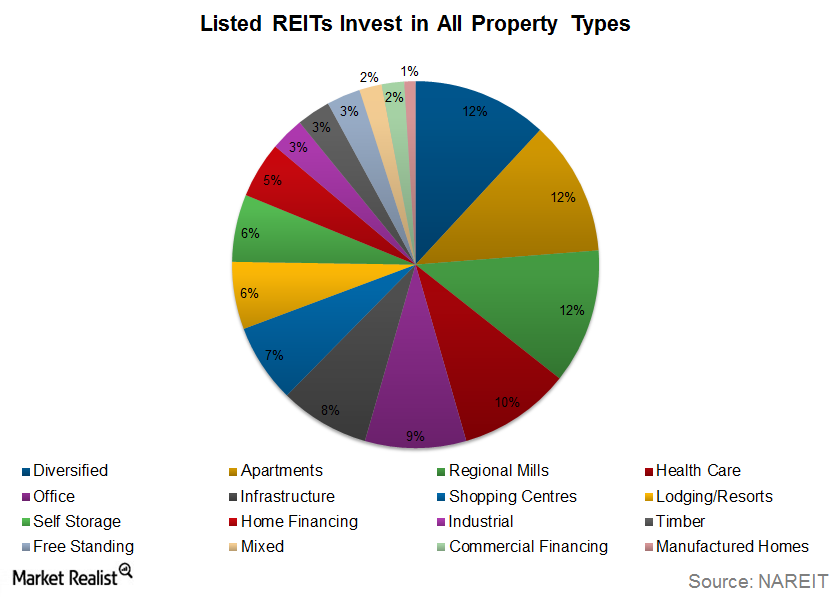
REIT Explained: Qualifications and Types of REITs
Let’s talk about the two main types of REITs (ICF)—equity REITs and mortgage REITs.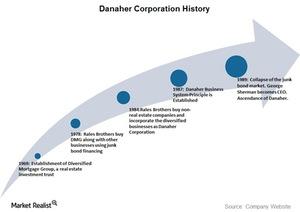
Danaher’s Journey from Corporate Raider to Corporate Statesman
Danaher (DHR) was the brainchild of brothers Steven and Mitchell Rales. It was incorporated as a holding company in 1984.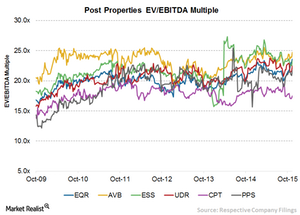
What Post Properties’ Higher-than-Average EV-to-EBITDA Multiple Means
Post Properties’ EV-to-EBITDA ratio is in line with its historical valuation, ranging between 12.2x–25.5x, with a current EV-to-EBITDA ratio of ~21.7x.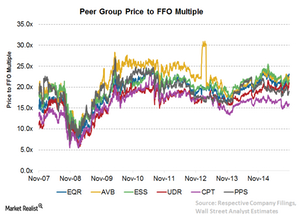
Assessing Post Properties’ Average Price-to-FFO Multiple
Post Properties’ TTM price-to-FFO multiple is in line with its historical valuation at around 18.9x.
A Must-Read Company Overview of Post Properties
Headquartered in Atlanta, Georgia, Post Properties is structured as an REIT and completed its initial public offering in 1993.
An Overview of AvalonBay Communities’ Geographic Coverage
The distribution of properties in attractive US coastal markets reflects AvalonBay Communities’ geographic diversification strategy.
What Methods Are Used to Determine REITs’ Valuation?
Traditional valuation methods don’t apply to REITs because their operations are different from traditional companies. REITs are valued based on three main techniques.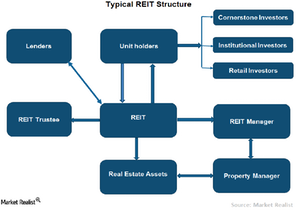
Why Did REITs Come into Existence?
US REITs came into existence in 1960 when President Eisenhower signed the REIT Act contained in the Cigar Excise Tax Extension.
All You Need to Know about Real Estate Private Equity
Real estate private equity funds have been attracting unprecedented amounts of capital, with assets under management reaching an all-time high of $724 billion.
Cushion Volatility With Bonds
High yield bonds are becoming increasingly correlated with the S&P 500 and might increase your risk exposure instead of giving diversification benefits.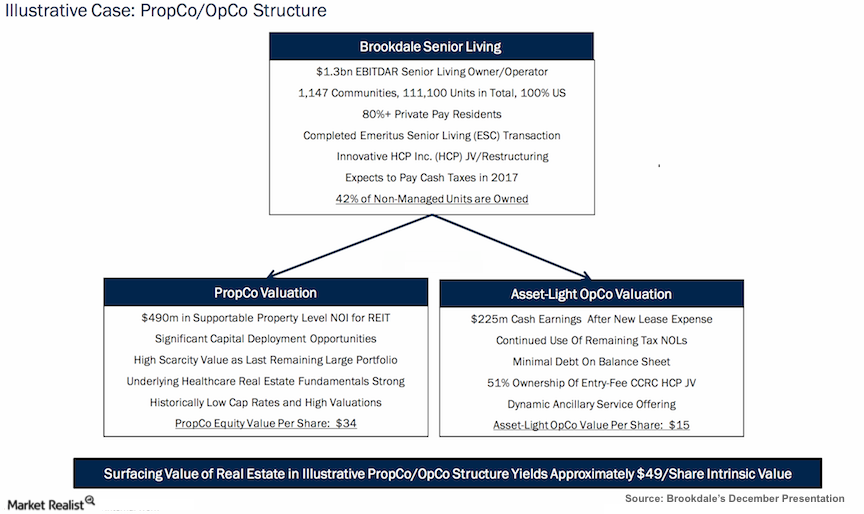
Why Sandell wants a spin-off of Brookdale’s real estate assets
Sandell has proposed a spin-off of Brookdale’s real estate assets into an REIT. It’s a tax-free spin-off that avoids double taxation on income distribution.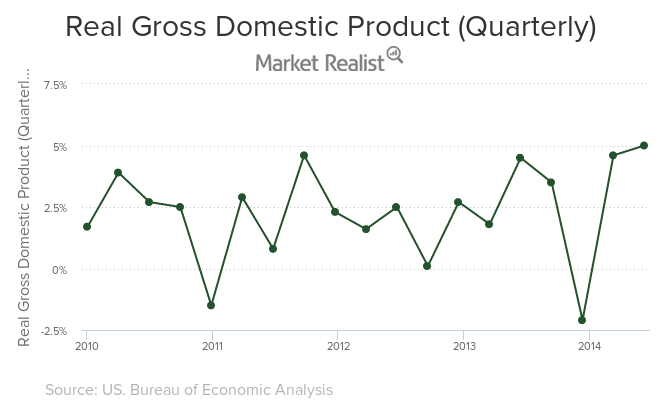
What 2 factors drive real GDP growth?
According to Jeffrey Lacker, two fundamental factors contribute to GDP growth in the long term—population growth and real GDP per worker.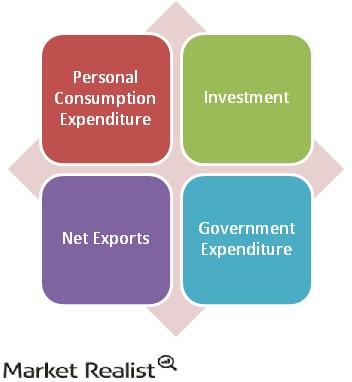
Overview: The four major components used for calculating the GDP
While calculating the GDP estimate, the Bureau first takes into account the sum of an individual’s personal consumption expenditures, that is, durable goods, non-durable goods, and services.
